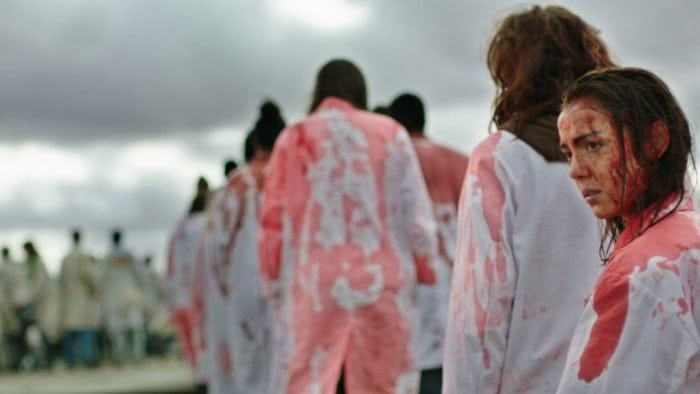
Scary movies manipulate the brain to boost excitement, according to new research.
And the largest fear response came from the unseen rather than what was actually on the screen.
Films like the Conjuring 2 and Insidious make our grey matter continuously anticipate action in response to threat.
Regions of grey matter involved in visual and auditory perception are triggered – enabling a rapid response.
Scientists in Finland mapped neural activity as study participants watched horror flicks.
Dr Matthew Hudson, a psychologist at the University of Turku, said: “Horror movies exploit this expertly to enhance our excitement.”
People found horror that was psychological in nature and based on real events the scariest.
They were far more scared by things that were unseen or implied rather than what they could actually see.
In the study published in NeuroImage 37 volunteers viewed two horror movies – The Conjuring 2 and Insidious – in an MRI scanner while their brain activity was measured.
Dr Hudson said: “Viewing horror movies in the MRI is quite an engaging experience, as you are all alone in the small tube and cannot see out, and the movie is shown via goggles just in the front of your eyes.
“Participants also rated their fear throughout the movies, and the ‘jump scare’ events in the movies were annotated.
“This allowed modelling of brain responses to both acute and sustained fear.”
He added: “Viewing both movies resulted in time-locked brain activity across the subjects in both sensory cortex and in the dorsal attention circuit, but also in limbic and paralimbic emotion circuits.
“This synchronisation was consistent across both movies, and its magnitude was greatest in the early sensory areas and weaker in the frontal cortex.
“Synchronisation also became stronger in the cingulate and somatosensory cortices as well as the midbrain during scary episodes of the movies.
“Acute fear or ‘jump scares’ increased activity in brainstem, thalamus, amygdala and cingulate cortices, whereas sustained suspense amplified mainly sensory responses. Again, the results were similar for both movies.
“These data suggest that there is dynamic engagement of different survival circuits in the brain depending on the proximity of the fear.”
The researchers first established the 100 best and scariest horror movies of the past century and how they made people feel.
More than seven-in-ten reported watching at last one every six months. Their reasons, besides the feelings of fear and anxiety, was mainly for excitement.
Humans are fascinated by what scares us, be it sky-diving, roller-coasters, or true-crime documentaries – provided these threats are kept at a safe distance.
Horror movies are no different, said the researchers.
Co-author Dr Hudson said: “Watching horror movies was also an excuse to socialise, with many people preferring to watch horror movies with others than on their own.”
Most movies have our heroes face some kind of threat to their safety or happiness.
But horror films up the ante by having some kind of superhuman or supernatural threat that cannot be reasoned with or fought easily.
The findings shed light on why we are drawn to them as entertainment.
Principal investigator Professor Lauri Nummenmaa said: “The creeping foreboding dread that occurs when one feels that something isn’t quite right and the instinctive response we have to the sudden appearance of a monster that make us jump out of our skin.”
During those times when anxiety is slowly increasing, regions of the brain involved in visual and auditory perception become more active, as the need to attend for cues of threat in the environment become more important.
Prof Nummenmaa said: “After a sudden shock, brain activity is more evident in regions involved in emotion processing, threat evaluation, and decision making, enabling a rapid response.”
The study also found named the top ten horror movies of the past hundred years voted for by the public.
They were The Devil’s Backbone followed by The Wailing, The Conjuring, REC 2 and Insidious.
The came The Exorcist, Goodnight Mommy, A Chinese Ghost Story, The Conjuring 2 and Under The Shadow.
This was based on a survey of more than 200 people from a comprehensive list 100 popular mainstream horror movies selected from an analysis of movie databases.